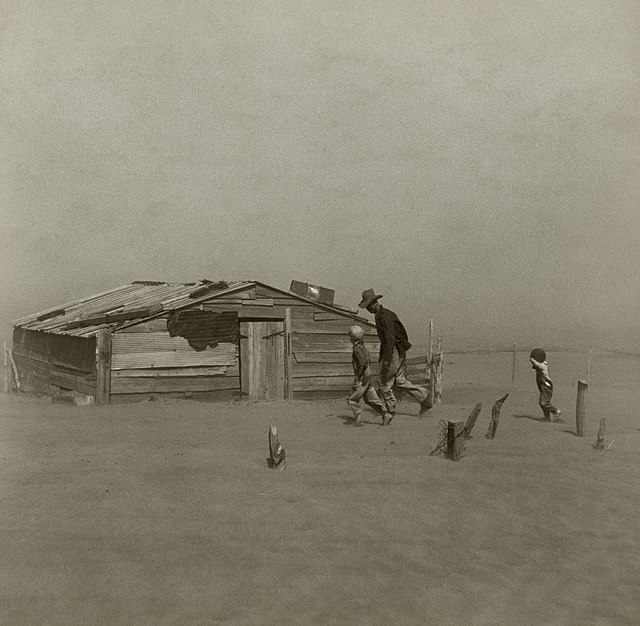The Dust Bowl was the result of a period of severe dust storms that greatly damaged the ecology and agriculture of the American and Canadian prairies during the 1930s. The phenomenon was caused by a combination of natural factors and human-made factors: a failure to apply dryland farming methods to prevent wind erosion, most notably the destruction of the natural topsoil by settlers in the region. The drought came in three waves: 1934, 1936, and 1939–1940, but some regions of the High Plains experienced drought conditions for as long as eight years.
A farmer and his two sons during a dust storm in Cimarron County, Oklahoma, April 1936. Iconic photo entitled "Dust Bowl Cimarron County, Oklahoma" taken by Arthur Rothstein.
A dust storm approaches Stratford, Texas, in 1935.
A dust storm; Spearman, Texas, April 14, 1935
Heavy black clouds of dust rising over the Texas Panhandle, Texas, c. 1936
A dust storm, also called a sandstorm, is a meteorological phenomenon common in arid and semi-arid regions. Dust storms arise when a gust front or other strong wind blows loose sand and dirt from a dry surface. Fine particles are transported by saltation and suspension, a process that moves soil from one place and deposits it in another.
A sandstorm approaching Al Asad April 27, 2005.
An aerial view of a sandstorm over the Namib Desert
Dust storm in Sahara, painted by George Francis Lyon
Sydney shrouded in dust during the 2009 Australian dust storm.








